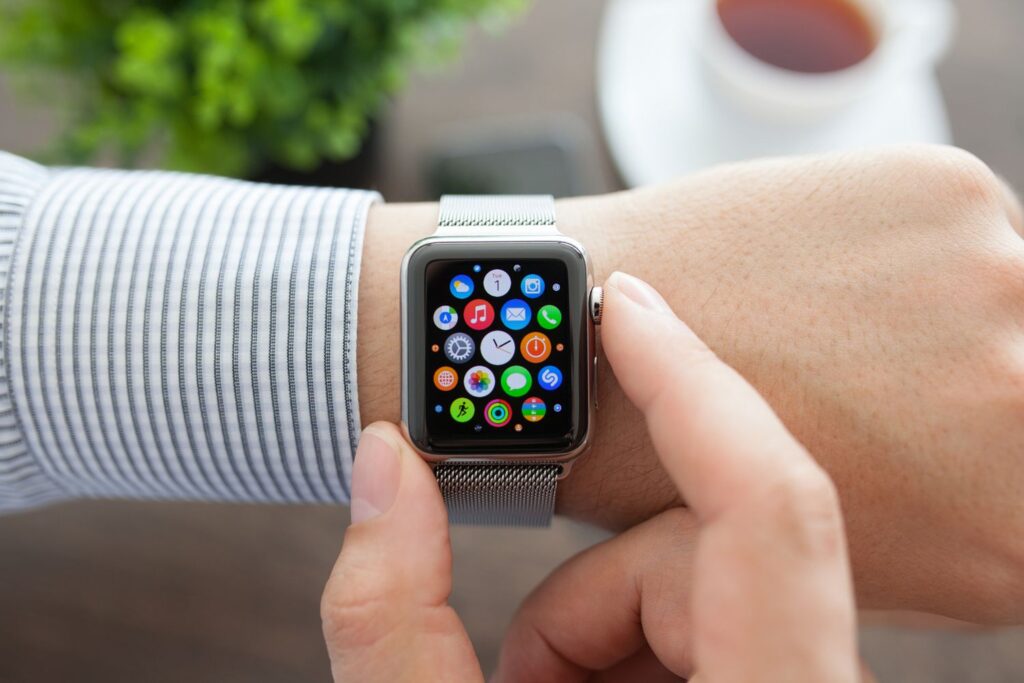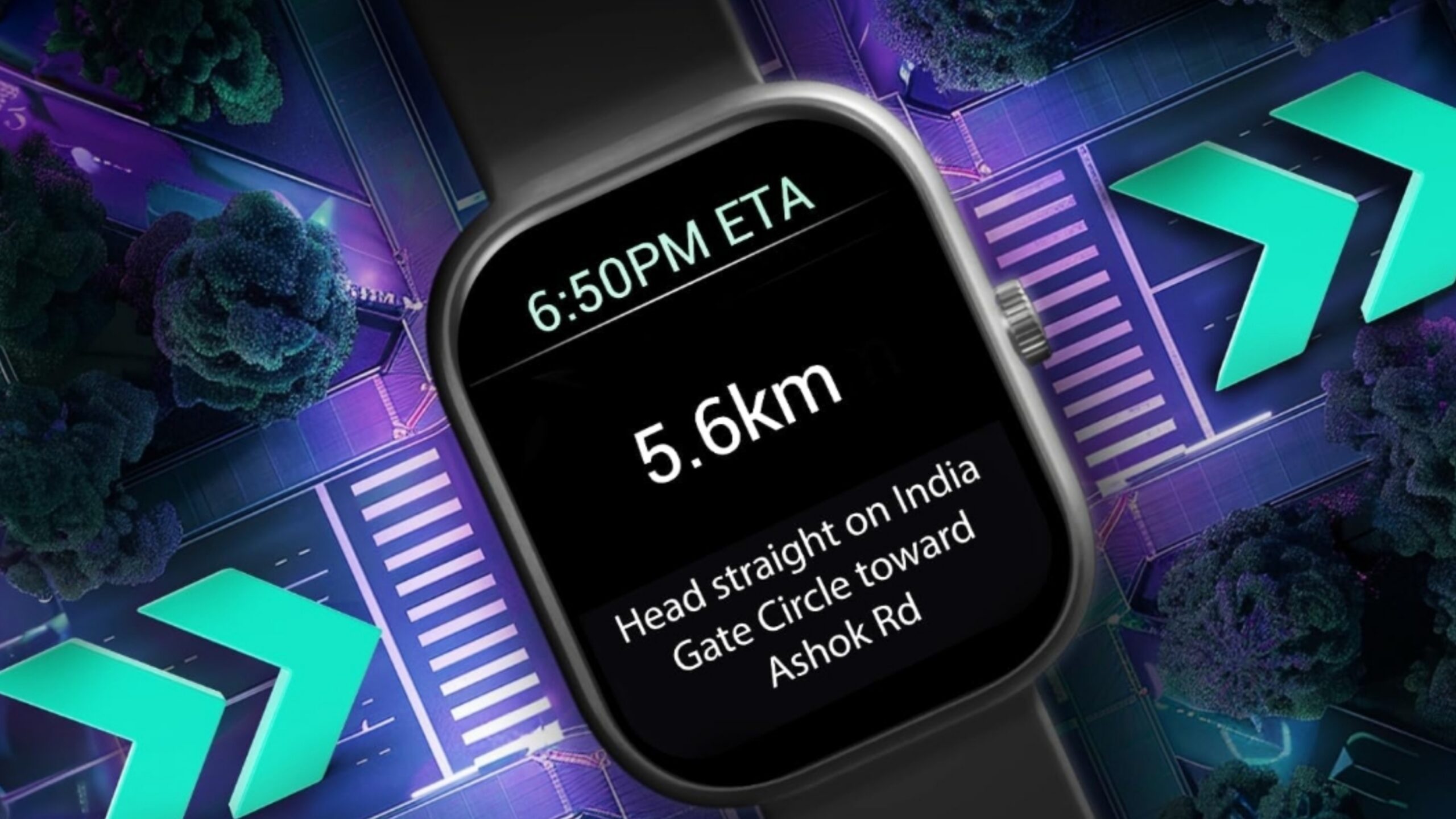A smartwatch is a portable device designed to be worn on the wrist. Like smartphones, they use touchscreens, provide apps, and often record your heart rate and other vital signs.
The Apple Watch and Wear (formerly Android Wear) models led more consumers to appreciate the utility of wearing a mini computer on their wrist. Additionally, smartwatches specialized for outdoor activities often complement other, heavier devices in an adventurer’s tool kit.
What is a smartwatch and what do they do?
A Brief History of Smartwatches:
Although digital watches have been on the market for decades – some of which have capabilities like calculators and unit converters – it was only in the 2010s that tech companies began releasing watches with smartphone-like capabilities.
Apple, Samsung, Sony, and other major companies offer smartwatches in the consumer market, but the credit for popularizing the modern-day smartwatch actually goes to a small startup.
When Pebble announced its first smartwatch in 2013, it raised a record amount of funding on Kickstarter and sold over a million units.
The Pebble smartwatch was discontinued when the company closed in 2016, but there are still many fans and enthusiasts who continue to use and develop it.
At the same time, advances in silicon miniaturization opened the door to other types of dedicated-purpose smartwatches. For example, companies like Garmin support smartwatches like the Fenix, which are more rugged and optimized with sensors and trackers to support back-country expeditions.
Similarly, companies like Suunto have released smartwatches optimized for scuba diving, which can survive at great depths for long periods of time.

What do smartwatches do?
Most smartwatches – whether they are for daily use (such as the Apple Watch) or for specific purposes (such as the Garmin Fenix) – offer a set of standard features:
Notifications: Smartphones display notifications to alert you to important events or activities. Notification types vary; Smartphone-connected devices can reflect phone notifications on your wrist, but other smartwatches display notifications that only wearable devices can provide. For example, the new Apple Watch includes a fall sensor. If you fall while wearing the watch, it senses your subsequent movement. If it doesn’t detect any movement, it sends a series of escalating notifications. If you don’t respond to notifications, the watch assumes you’re injured and alerts authorities on your behalf.
Apps: Apart from showing you notifications from your phone, a smartwatch is only as good as the apps it supports. App ecosystems vary, and they are tied to either Apple’s or Google’s environments. Smartwatches with a specific purpose, like hiking or diving, typically support the apps needed to fulfill that purpose, without the opportunity to add other types of apps.
Media management: Most smartwatches paired with a smartphone can manage media playback for you. For example, when you’re listening to music on an iPhone using Apple’s AirPods, you can use your Apple Watch to change the volume and track.
Reply to messages by voice: Remember the old Dick Tracy comics, where the hero detective used a watch as a phone? Modern smartwatches running watchOS or Wear operating systems support voice messaging.
Fitness Tracking: If you’re a hard-core athlete, a dedicated fitness-oriented smartwatch may be a better choice than a general-use smartwatch. Still, many smartwatches include heart rate monitors and pedometers to help track your workout.
GPS: Most smartwatches include GPS to track your location or receive location-specific alerts.
Good battery life: Modern smartwatches have batteries that will last you a day with normal use, and still have some left over. Battery usage varies; The Apple Watch typically lasts for 18 hours on a single charge, while the Samsung Galaxy lasts for up to 40 hours.

Types of Smartwatch:
Broadly speaking, smartwatches occupy two niches in the wearable devices market. First, a general-purpose smartwatch — like the Apple Watch and most Google-powered Wear devices — is a mix of form and function.
They are designed to replace mechanical wristwatches and rely heavily on smartphones. Think of these as an accessory for your phone that you keep on your wrist.
You can also see vendor-specific categories of general-purpose smartwatches in the consumer market:
Apple Watch: Designed and sold by Apple.
Pixel Watch: Designed and sold by Google, it is compatible with Android phones, but not currently with Apple devices.
Wear watches: Designed and sold by multiple vendors using Google’s Wear operating system.
Tizen watches: Proprietary operating system designed by Samsung for its popular Galaxy smartwatch line.
The second area includes specialized equipment for special use cases. These devices often offer a more robust version of a fitness tracker, as they differentiate between phone-dependent smartwatches and stand-alone fitness trackers like Fitbit.
Examples of these specialized devices include:
Hiking watches: Designed for remote travel and feature strong battery life, GPS tracking and navigation, basic essentials, and weather forecasting. Often engineered for advanced durability to protect against bumps, drops, dust, and water. Examples include the Garmin Fenix 5 Plus, Suunto 9 Baro, and the 2022 Apple Watch Ultra.
Diving Watches: Connect your First Stage regulator to a Bluetooth transmitter to use a diving watch. Garmin’s Descent Mk2i and Suunto’s DX provide depth, time remaining, temperature, and other important indicators. And the Apple Watch Ultra can use the Oceanic+ dive computer app to calculate dive times, display many different stats, and handle depths up to 130 feet (40 meters).
